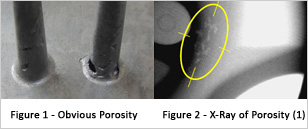| Today we have a guest post from Vikram Bhargava. Vikram is a Fellow of the Society of Plastics Engineers and past chairman of its Product Design and Development Division. For 40 years, he has worked in the area of development, manufacturing and management, especially in plastics. He has recently retired as the Director of Mechanical Engineering Services at Motorola Solutions in Holtsville, NY where he was heading an international group of professionals and led several Six Sigma projects with millions of dollars in savings. He is a certified Motorola Six Sigma Black Belt and sought after trainer. He has trained thousands of engineers and suppliers in the proper design and manufacturing of plastic parts and assemblies in the US, Canada, China, Taiwan and India. He is currently authoring a book on Robust Product Design with Hanser Publications, LLC, an internationally recognized publisher to be released in 2015. You can know more about him click here LINKEDIN |
Here is my first blog post on the topic of a holistic approach to plastic product design. To cover the topic in its entirety I will be writing a series of posts in coming months. So let’s start with the basics. Here are five characteristics that distinguish a great design from the legions of not-so-great designs. A great design should:
|
Plastic vs. Metal |
| Plastic components may offer many advantages over metal and are gaining wide acceptance across a variety of industries. However a plastic part designer must give extra attention to the material’s response to different conditions. A quick look at the difference in physical and environmental properties between the two types of materials will clarify why this is soPhysical and Environmental Properties:Take for example two of the most common alloys used – AISI 1000 Series CR steel having a yield strength of up to over 900 MPa and modulus of elasticity of over 200 GPa; and 6000 series aluminum with the yield strength of up to over 400 MPa and modulus of elasticity of over 70 GPa. Compare these properties with that of one of the most common engineering plastics, polycarbonate, which are about 60 MPa and 2,400 MPa respectively! Additionally, almost all plastics will melt and burn before they reach anywhere near the high end of the operating temperature ranges of any of the metals. While you can take the metal data properties ‘to the bank’, the property data for the plastics is meant only as a guide and will vary tremendously depending on the design, processing conditions, environmental conditions, operating temperatures and rate of loading. |
Latent Defects: |
 Common production processes to produce metal parts such as casting, die-casting and stamping will result in almost zero latent defects and even if present, can be easily detected with the help of conventional QC tools. Even the porosity in die-castings can be non-destructively detected through an X-Ray Common production processes to produce metal parts such as casting, die-casting and stamping will result in almost zero latent defects and even if present, can be easily detected with the help of conventional QC tools. Even the porosity in die-castings can be non-destructively detected through an X-Ray(Refer to Fig1. & Fig 2.) |
| However, plastics on the other hand may have latent defects that are difficult to measure even with the use of highly complex equipment and/or destructive techniques. Therefore, it is important for plastic part designer to have a holistic* approach towards product design. |
 In the case of plastic products, the “individual parts” of the holistic approach are materials, design, tooling and processing. This can be akin to the four wheels of a high performance car in which equal consideration is to be given to all four wheels. To address these issues, it is important to follow simple design guidelines (empirical and data based), which when applied, can considerably reduce the errors and make the design as robust as possible. Mature engineering organizations are adopting tools and methodologies to formalize these design guidelines and automate the process of identifying and correcting errors early in the design lifecycle. In the case of plastic products, the “individual parts” of the holistic approach are materials, design, tooling and processing. This can be akin to the four wheels of a high performance car in which equal consideration is to be given to all four wheels. To address these issues, it is important to follow simple design guidelines (empirical and data based), which when applied, can considerably reduce the errors and make the design as robust as possible. Mature engineering organizations are adopting tools and methodologies to formalize these design guidelines and automate the process of identifying and correcting errors early in the design lifecycle. |
| A powerful design analysis tool like DFMPro can quickly analyze the solid model and identify most of the design deficiencies before the plastic part goes into manufacturing. These tools and techniques provide a big leap forward for designers in producing a great design that has all the characteristics which I discussed at the beginning of my post. A good design is the solid foundation that can be further optimized downstream using molding simulation tools. In my next post, I will detail a simple part and demonstrate how one can avoid pitfalls using these tools along with the theory behind the rules. Attached is the hyperlink for a 2D drawing of a simple part that I will use for the discussion. ho·lis·tic adjective \hō-ˈlis-tik\ : relating to or concerned with complete systems rather than with individual part (1) X-Ray Courtesy Domingo Mary, Santiago de Chile |
| Posted by Vikram Bhargava on August 20, 2014 Read the second part of this blog post |
Learn more about what makes a great plastic part design. Download the complete DFM eBook
